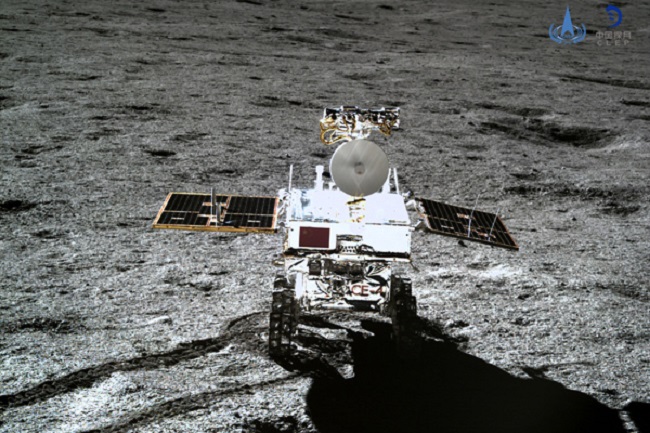Forget the Cheese: The Moon Was Once a Very Dangerous Place
Posted on Categories Discover Magazine

Billions of years ago, the quiet moon we know today was once a wild and violent place washed by volcanic eruptions, according to new data from the Chinese Yutu-2 rover.
After gamely setting down on the dark side of the moon in January 2019, the rover took thousands of readings of underground structures using its ground-penetrating radar – and this new paper is based on three years of reporting.
While the readings have attracted scientific attention, they’ve also attracted some scrutiny. Researchers have demonstrated how the radar (used on both Yutu-1 and Yutu-2) can produce false readings by interacting with the rover itself. But the new paper claims to have overcome these hurdles with the sheer quantity of the data and by excluding the first 330 feet, or so, as an unreliable “blind zone.”
Slow and Steady
The solar-powered Yutu-2 crept across the moon, covering only about .6 miles in three years.
This was nowhere near far enough to escape the massive South Pole-Aitken Basin, which is the largest impact basin in the solar system at about 1,500 miles across.
The rover rolled across a layer of regolith – loose soil and rock fragments – that had fallen on top of the lava plain and included debris from nearby impacts.
Ancient Eruptions
When crossing South Pole-Aitken Basin, Yutu-2’s radar identified three or four large deposits of hardened lava within the first 980 feet (the limit of its reach). This is evidence the satellite had once been much more volcanically active, like Jupiter’s moon Io.
The paper qualifies the deposits as “three or four” because the results were difficult to interpret for the age or even the type of deposit. According to the paper, the deepest layer, which began at 720 feet, was either a hardened basalt flow (a type of volcanic rock) or debris from the nearby Leibnitz basin. Just above it, the researchers identified a 200-foot section of hardened lava without qualification.
Later in the moon’s life, the epic eruptions seemed to give way to smaller outpourings: Radar indicated but didn’t confirm four small lava deposits relatively close to the basin’s surface.
Lunar volcanism ended about a billion years ago as the satellite cooled, although scientists still argue over whether the moon has active faults.
First to the Dark Side
Yutu-2’s mother ship, the Chang’e-4 spacecraft, made history when it set down on the farside of the moon, near the moon’s south pole. In the years since, scientists and national space programs have become increasingly interested in finding water sources on the moon – including those near the south pole – to supply future colonies.
On Wednesday, India’s Chandrayaan-3 craft set down near the south pole and released a rover of its own that will conduct experiments on the lunar surface over about 14 days.
Read More: European Spacecraft JUICE Travels to Jupiter’s Icy Moons